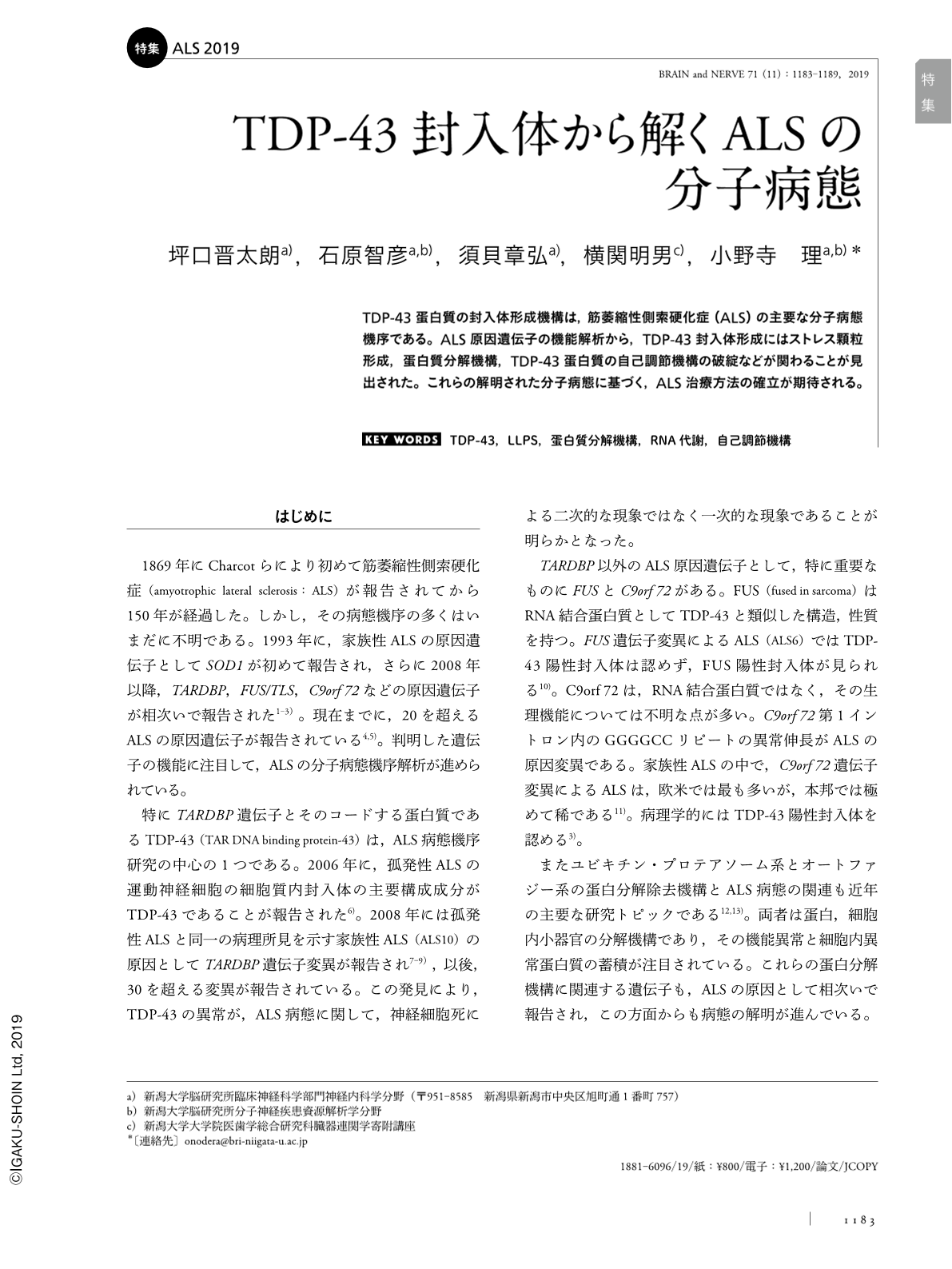Japanese
English
- 有料閲覧
- Abstract 文献概要
- 1ページ目 Look Inside
- 参考文献 Reference
TDP-43蛋白質の封入体形成機構は,筋萎縮性側索硬化症(ALS)の主要な分子病態機序である。ALS原因遺伝子の機能解析から,TDP-43封入体形成にはストレス顆粒形成,蛋白質分解機構,TDP-43蛋白質の自己調節機構の破綻などが関わることが見出された。これらの解明された分子病態に基づく,ALS治療方法の確立が期待される。
Abstract
The molecular pathogenesis of amyotrophic lateral sclerosis (ALS) has been studied through analysis of the function of the protein produced by the causative genes of familial ALS. The products of these genes are classified as RNA binding proteins, or proteins related to proteolytic systems. However, most case of familial ALS, and sporadic ALS show TAR DNA binding protein-43 (TDP-43) immune-positive cytoplasmic inclusions. Therefore, the molecular mechanism of formation of TDP-43 inclusions and dysfunction caused by TDP-43 inclusions has been studied. As for the mechanism of inclusion formation, non-membrane organelle formation by liquid-liquid phase separation (LLPS) is important. The ubiquitin-proteasome and autophagy systems are important for the degradation of these inclusions. Several genes associated with these systems have been identified as causative genes for ALS. The formation of cytoplasmic inclusions results in the loss of TDP-43 from the nucleus, resulting in abnormalities in RNA metabolism, through the alteration of spliceosomes and Gemini of coiled bodies. Furthermore, in ALS, the regulation of TDP-43 mRNA/protein expression levels has failed. Failure of the autoregulation system facilitates TDP-43 inclusion formation. Development of treatments for ALS based on these elucidated molecular mechanisms is desirable.

Copyright © 2019, Igaku-Shoin Ltd. All rights reserved.


